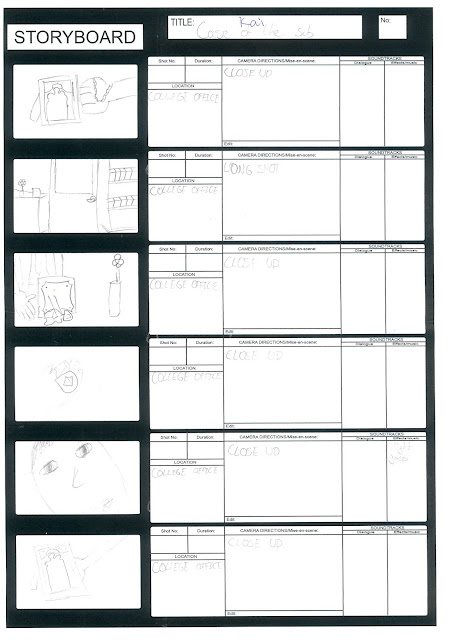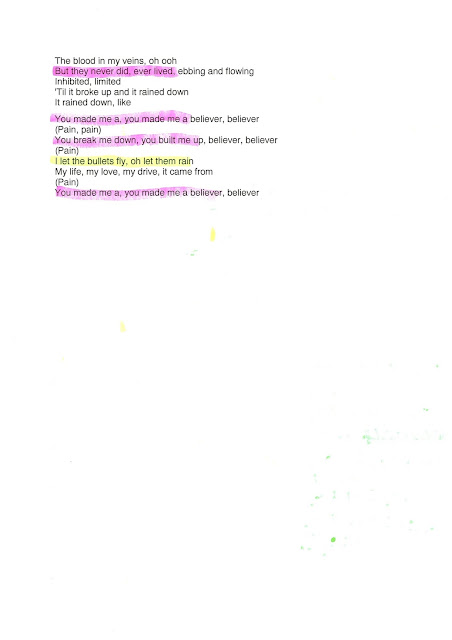Camera:
The idea of single camera shorts is to create a more intimate feel and realism for the piece. Having a single camera short allows you to gain more control of the scene and lets you control lighting for each individual shot and allows for more creativity. Directors will sometimes will use more than one camera in certain situations, such as high speed chases or scenes that involve stunts. This is because it is easier to use more than one camera so you can get the shots from all different angles and won't have to continuously re-shoot the scene. For a single camera piece, they are shot by doing the same scene from different angles. For example, filming a conversation from one persons perspective, and then filming it from the other persons.
Me and two other people made a 10 minute single camera short for our media. This is an example of how a single camera short is shot. The shots are typically longer and make you feel as if you are in the scenes as they add a more personal feeling to the piece. Because the scenes have to be shot a number of times, you have to make sure that everything is done the same as if it isn't it will break the continuity when in editing.
Lighting:
A single camera production is a lot easier to light as you can actually light all the scenes individually which gives you more creativity with lighting. You can light all thaw shots in the scene differently if you wanted to, however this wouldn't be the best idea. The problem with using multiple cameras is the lighting can end up looking fake and can look like it's been filmed inn a studio. The advantage with single camera productions is that you can control the lighting a lot easier and make it look real.
Again for our media, me and another student created a music video, using one camera. Throughout the music video, you can see where we have used the lighting. In some shots we have made the lighting visible to provide a studio look to the video and in others the lights aren't visible. The lighting is used to highlight and bring your eyes to one area. Dragging the focus of the audience to what you want them to see. The lighting allows you to define certain objects or things in the scene that you might not be able to do with multi camera set ups. You can specifically target one thing with lighting of single cameras, again, brining the audiences attention to where you want it.
Sound:
For sound in single camera productions, it can become very awkward depending on where the camera is. For example if you are further away from someone in one shot than you were in the other, the sound would end up being different and may pick up background noise that you don't want. One thing that also makes it awkward is the when filming you have to overlap and start from certain parts in the script to make sure that the sound is all the same and that is is no differences. If this isn't done it can make the sound jumpy and can lose the viewers interest. However one thing that can be considered an advantage is not all audio is used from one scene. because you have multiple takes, you can use the audio from other clips, meaning that you wouldn't have to re-shoot scenes just to get the audio right. this can save time and in the industry, money.
This is an example of what the sound would be like in a single camera production. It also shows how it would be shot and set up.
Editing:
Editing can take a long time to do and an advantage of multi camera productions is that they can be edited a lot quicker as there is less footage to go through as single camera productions film the same scene over and over again meaning that there is a lot of footage. Single camera productions commonly film a lot of scenes in one go to try to speed up the process, however this depends on the availability of actors and if the location. Multi camera productions can usually be edited live. For example in football or on the news, they can switch between different cameras to get a better view of whats going on. this can'y be Dione with single camera productions as you would have to physically move the camera to get a different angle. Shot logs are commonly used inn editing as they allow someone to see which shots are good and which are bad. this is handy and commonly used in single camera productions as it saves more time for the people editing as they won't have to look through all the clips too find what shot they need. People will also sort all the shots into folders and will do logs to manage their footage.
Single Camera Genres and Formats:
A commonly used genre for single camera productions is horror. This is because a lot of horrors are slow paced and build up. An example of the sowed be where you are following someone slowly down a hallway. The single camera makes it feel like you are there and adds a personal feeling to the scene. An example for this would be IT which released in 2017. the slow pace builds up and tension and brings you in. Films that have a faster nature are easier done with a multi camera set ups, and things that are of a slower nature, such as horrors, are more suited to a single camera production.
Multi Camera Techniques:
Something such as an action movie would be suited for a multi camera production as fast scenes are easier to film with multiple cameras. One other example for multi camera productions would be soaps. because they have to the film and edit there pieces quickly, a multi camera set up is more favourable. It allows them. rot get the shots that they want in less takes and allows the deifying to be done a lot quicker this is good because soaps are sometimes done live, or are aired a day after they have been filmed.

























































